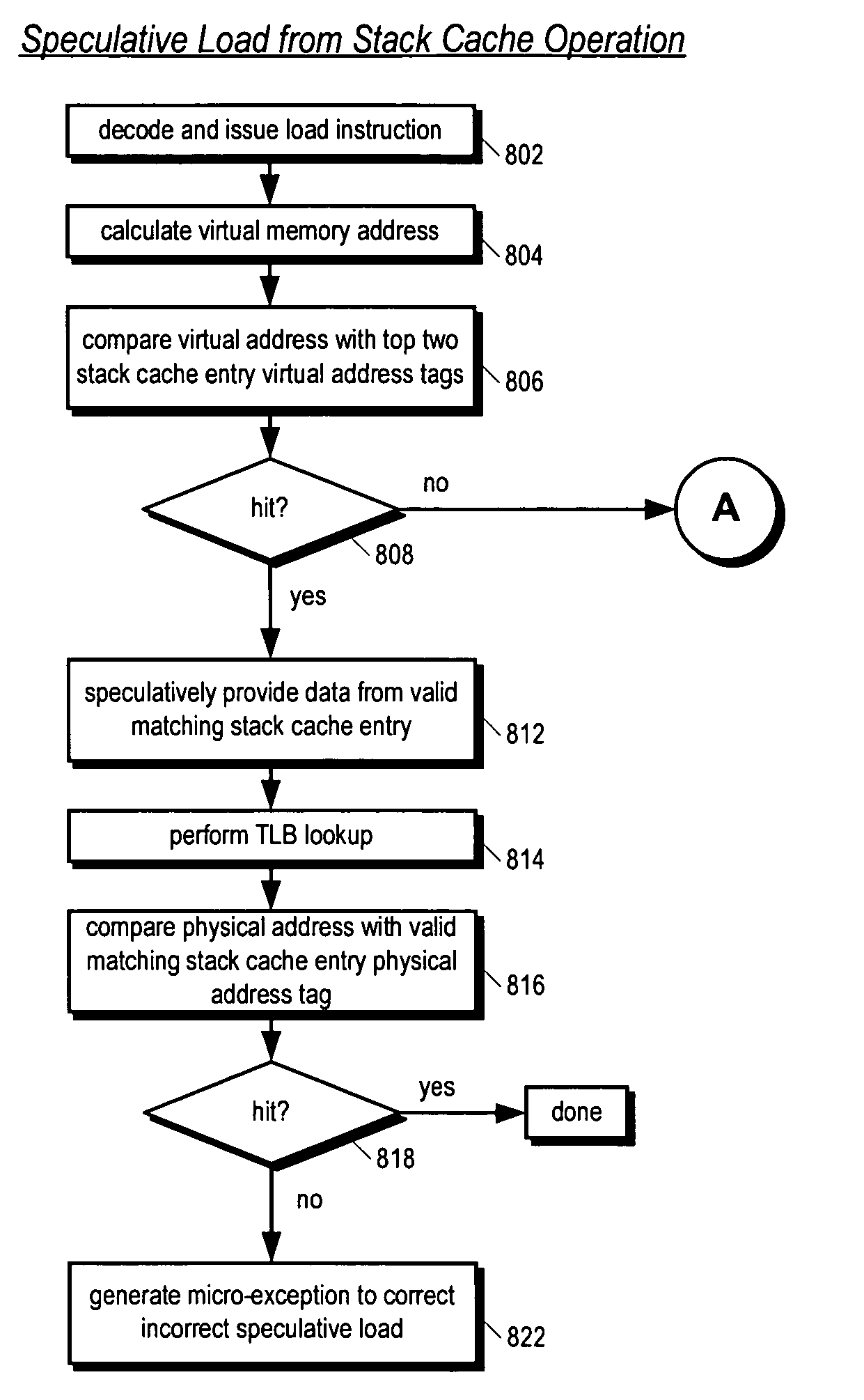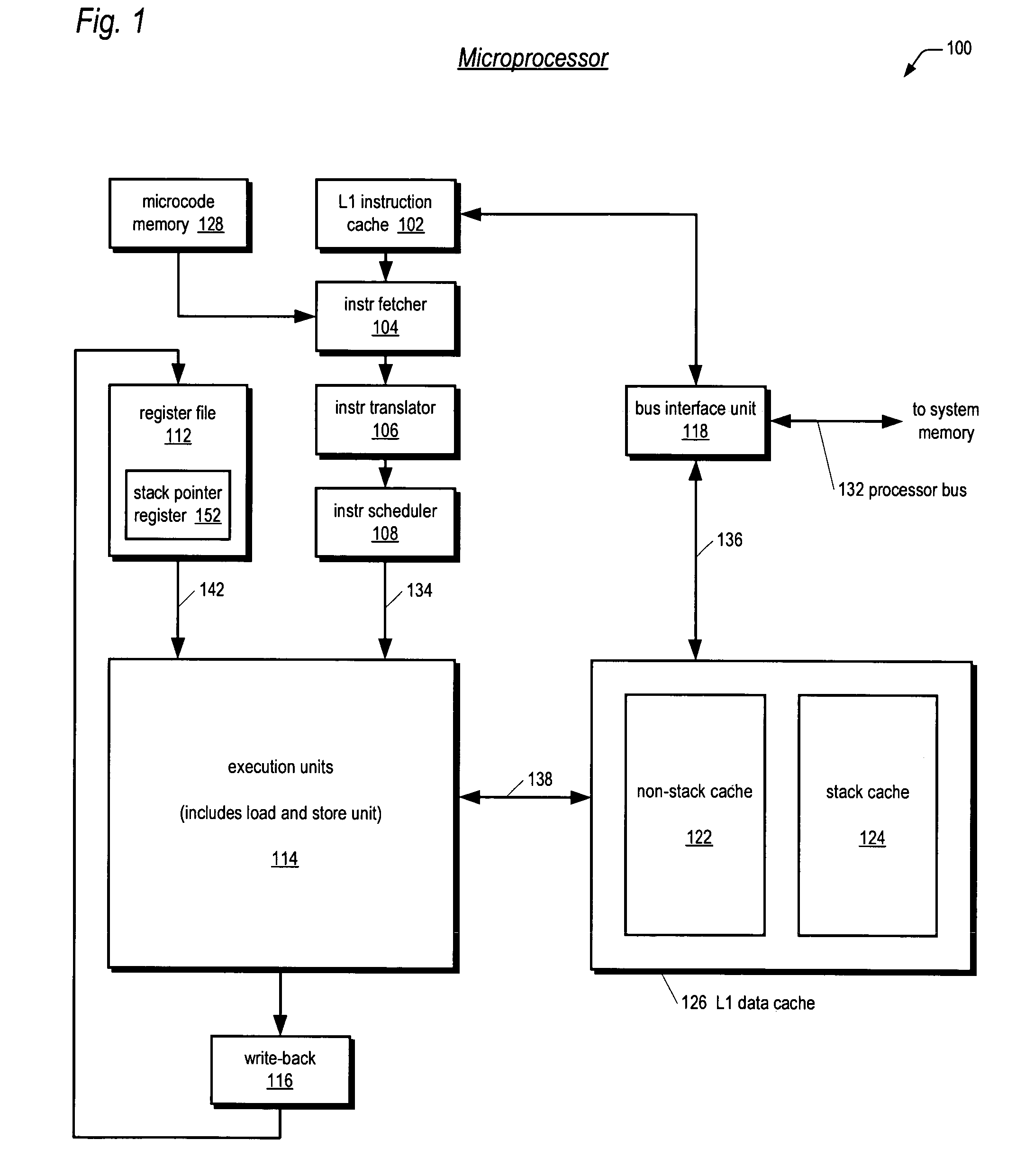Microprocessor and apparatus for performing speculative load operation from a stack memory cache
a microprocessor and stack memory technology, applied in the field of cache memories in microprocessors, can solve the problems of large cache size, inability to perform such a system, and inability to meet the requirements of storage capacity,
- Summary
- Abstract
- Description
- Claims
- Application Information
AI Technical Summary
Benefits of technology
Problems solved by technology
Method used
Image
Examples
Embodiment Construction
[0037]The present invention takes advantage of the fact that, broadly speaking, programs typically segregate system memory into two regions: a stack region and a non-stack region. The non-stack region is commonly referred to as the heap. A major difference between the stack and the heap is that the heap is accessed in a random access manner; whereas, the stack is generally accessed in a last-in-first-out (LIFO) manner. Another distinction between the stack and the heap is the manner in which the instructions that read or write them specify the address of the location to be read or written. Instructions that read or write the heap generally specify the memory address explicitly. In contrast, instructions that read or write the stack generally specify the memory address implicitly via a special register in the microprocessor, commonly referred to as the stack pointer register. A push instruction updates the stack pointer register by the size of the data to be pushed onto the stack, an...
PUM
 Login to View More
Login to View More Abstract
Description
Claims
Application Information
 Login to View More
Login to View More - R&D
- Intellectual Property
- Life Sciences
- Materials
- Tech Scout
- Unparalleled Data Quality
- Higher Quality Content
- 60% Fewer Hallucinations
Browse by: Latest US Patents, China's latest patents, Technical Efficacy Thesaurus, Application Domain, Technology Topic, Popular Technical Reports.
© 2025 PatSnap. All rights reserved.Legal|Privacy policy|Modern Slavery Act Transparency Statement|Sitemap|About US| Contact US: help@patsnap.com



